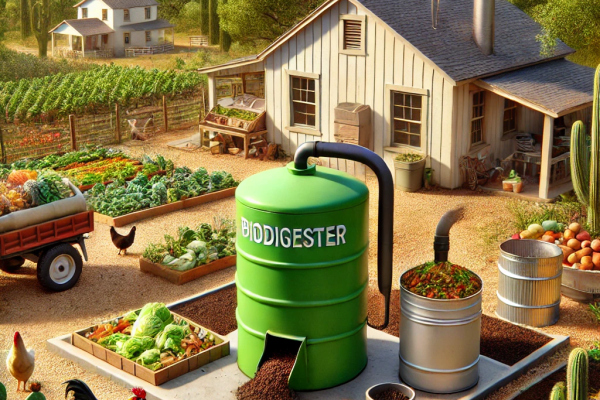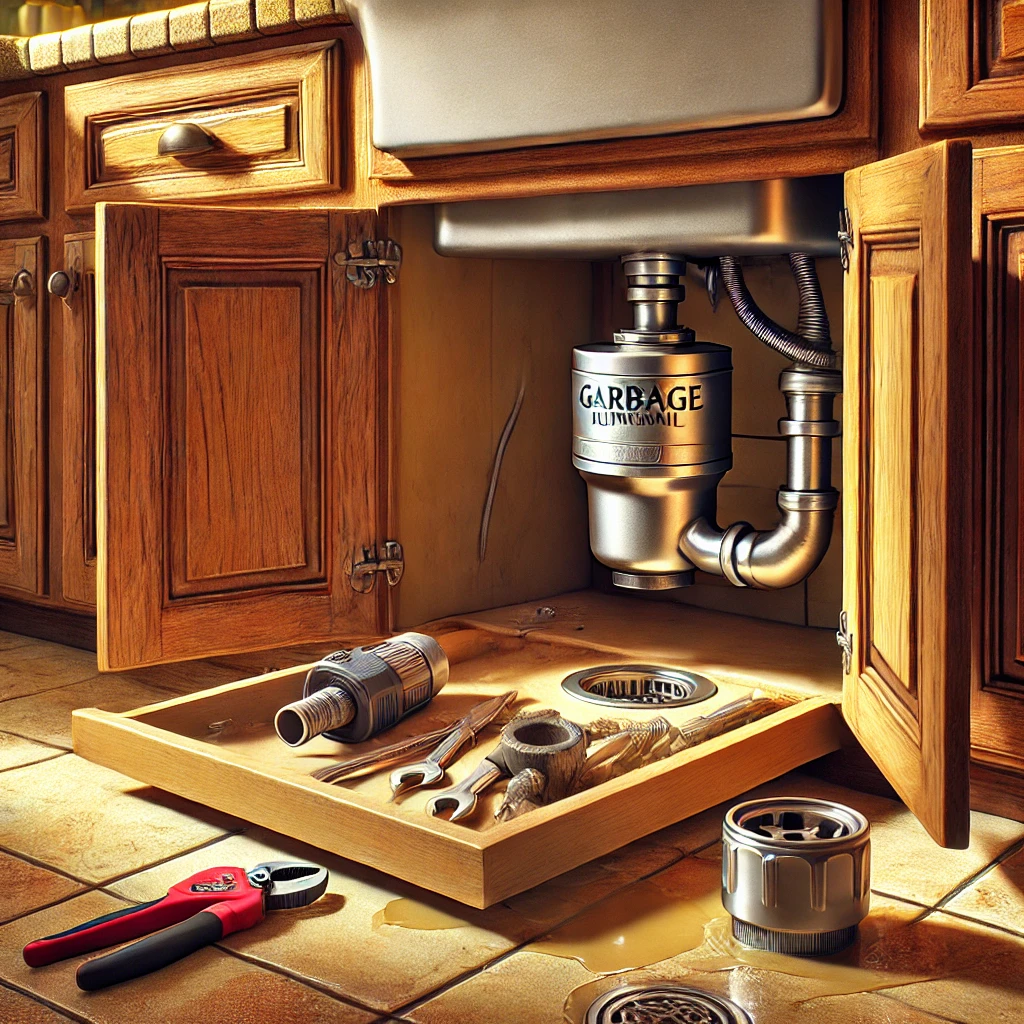
Biodigester: How to Turn Waste into Free Compost and Energy (and Why It’s Especially Important for Texas)
Every time we toss out the remains of last night’s dinner, our morning coffee grounds, or trimmings from fresh vegetables, we rarely think about the money we’re throwing away along with them—or the impact on the environment. Why is that? Most of the food scraps we put in the trash either end up in a landfill or require significant resources to process. Meanwhile, there’s a solution that can transform ordinary organic waste into both fertilizer for your garden and biogas for household needs. That solution is a biodigester. Let’s take a look at what it is, how it works, and why homeowners in Texas especially stand to benefit from using one.
What Is a Biodigester and How Does It Work?
A biodigester is a device (or system) that uses beneficial bacteria under certain temperature conditions to break down organic waste. As a result of this process—from food scraps, manure, grass clippings, leaves, and other organic matter—you get two valuable products: compost (the solid fraction, sometimes in liquid form if it’s a liquid-based system) and biogas. Compost serves as a natural fertilizer, while biogas, which has a similar composition to methane, can often be used for heating, cooking, or even generating electricity.
Why Biodigesters Are Particularly Relevant for Texas
Here is where Texas comes into play: Many areas of Texas—particularly in the southern and central regions—have large farms, private estates, and rural homes that generate a significant amount of organic waste. Plus, the state’s climate, with its hot sun and occasional water shortages, makes any solution that effectively handles waste and conserves resources especially valuable. Add to that the growing concern about environmental impact: The state’s population is on the rise, landfills are becoming more crowded, and government officials are increasingly looking for ways to reduce greenhouse gas emissions. Biodigesters could be one logical answer to these challenges.
Advantages of Installing a Biodigester at Home
Financial Benefits
First, you can save money. Imagine not having to pay for hauling away large amounts of kitchen waste because you’re turning it into free organic fertilizer for your garden instead. If you live in Texas—where many people have spacious yards and gardens—you can see real savings by not having to buy as much fertilizer. On top of that, if you set up your system properly and make good use of the biogas, you can cut down on your electricity or gas bills.
Reduced Odors
There’s also the benefit of reduced unpleasant smells: food scraps no longer pile up in your trash bin but go straight into the digester for processing.
Environmental Benefits
From an environmental standpoint, using a biodigester reduces the amount of waste going to landfills. Fewer overloaded landfills mean less landfill gas (mainly methane) released unchecked into the atmosphere, contributing to global warming. A biodigester, in contrast, captures that methane for practical use. It’s an elegant solution: Something that could have been the source of additional emissions is now used productively at home.
Moreover, in a tech-forward state like Texas—where self-sufficient energy systems and resource-efficient living have always been appreciated—biodigesters fit right in.
How Does a Biodigester Actually Work?
The simplest way to think of it is as a large airtight chamber (or multiple chambers) where you place organic waste. Under a specific temperature (often between 30 and 40 degrees Celsius, depending on the model and type of bacteria), microorganisms break down these scraps. The process produces gas—methane and carbon dioxide—and the solid fraction gradually becomes nutrient-rich compost.
Maintenance Requirements
To ensure the process runs smoothly, you have to maintain stable temperature and moisture levels and occasionally stir the mixture. Some systems have built-in agitators that automatically turn on to mix the contents evenly. Others require manual stirring. But the principle is the same: you add waste—and get gas and fertilizer.
Key Considerations for Installing a Biodigester in Texas
Space Requirements
First, you need space. The system shouldn’t interfere with your life, your neighbors, or your landscaping.
Local Regulations
Familiarize yourself with local regulations and guidelines. Some counties have restrictions related to storing biogas and using gas-generating equipment.
Expert Assistance
It’s wise to consult with experts. As a professional plumber, I often help homeowners choose the right biodigester model and install it to ensure safety, convenience, and efficiency.
Real-Life Example: A Biodigester Success Story
Let me give you a real-life example: A friend of mine who lives in the suburbs of Dallas installed a biodigester in his backyard. He keeps chickens, grows a small vegetable garden, and his family loves to cook at home—so the volume of food scraps is significant. In just the first year of using the biodigester, he saved money on fertilizers he used to buy in bulk, and he noticed a decrease in his gas bills. Part of his greenhouse’s heating in winter now comes from the biogas, while the compost enriches his garden soil.
“I’m not just saving money, I’m also doing something meaningful for the environment,” he says. At a time when many people are looking for more responsible consumption habits, his experience is a great example of how it can be done.
Biodigesters and the Bigger Picture
On a larger scale, biodigesters are part of the trend toward renewable energy and smarter waste management. Texas has long embraced large-scale industrial biogas facilities on farms that process manure and produce gas for heating or electricity. Now, this technology is increasingly coming to private properties.
Financial Incentives
There are models suitable for ordinary households, and while the initial cost might seem high, in the long run you can save a considerable amount of money. Additionally, these systems may be eligible for government programs, subsidies, or “green” energy incentives that different areas of the state are trying to encourage.
Questions to Consider
If you’re contemplating whether a biodigester is right for you, think about these questions:
- How much organic waste do you generate?
- Do you have a yard, garden, or small farm where the compost could be put to good use?
- How keen are you on reducing your utility bills?
In Texas, a lot of water goes toward irrigation, and well-prepared compost helps soil retain moisture, which can reduce how often you need to water. So the savings can be double or even triple.
Conclusion
Finally, keep in mind the bigger picture: when we use a biodigester, we contribute to more responsible environmental practices. It’s a win-win scenario for everyone: for the homeowner who lowers costs and gains fertilizer, for the state tackling landfill overflow and emissions, and for future generations who will benefit from a healthier planet. In Texas—famous for its large-scale industries and high energy consumption—every private initiative takes on extra significance.
To sum up, a biodigester isn’t just a trendy gadget for the eco-minded. It’s a realistic, cost-effective, and fairly simple way to give food waste a second life, reduce expenses related to farming or maintaining a rural household, and take a small but meaningful step to preserve the environment. And if you live in Texas, where the climate and the sheer size of properties speak for themselves, installing a biodigester can bring you especially significant benefits.
So the next time you’re about to throw away vegetable trimmings or leftovers, remember there’s a way to repurpose them. Set up a biodigester at home—you’ll get energy and eco-friendly fertilizer while helping reduce the strain on Texas landfills. Take it from me, a professional plumber: once you see how well a properly configured biodigester works, you’ll never think of “trash” and “waste” the same way again. And before long, you might be proudly telling your neighbors you have your own mini compost and gas generation station—right here in the heart of Texas!
If this idea inspires you, take the first simple step: look into different biodigester models, talk to installation experts, find out about local regulations, and make a small investment in the future. It’s entirely possible that in a year’s time, you’ll be wondering why you didn’t set up a biodigester sooner. After all, all it really requires is a bit of enthusiasm, some food waste, and a belief that one person really can make a difference.






